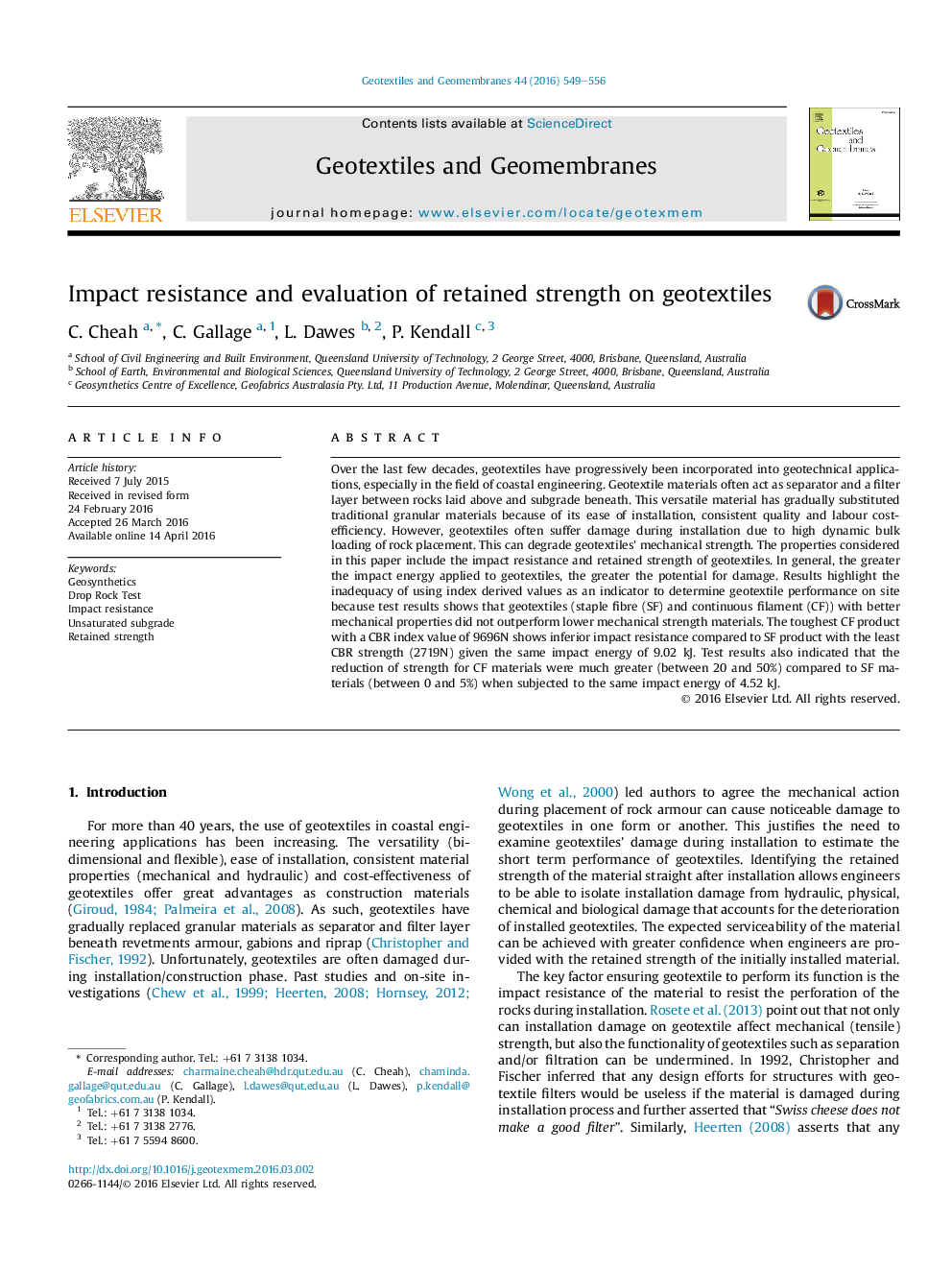| Article ID | Journal | Published Year | Pages | File Type |
|---|---|---|---|---|
| 274024 | Geotextiles and Geomembranes | 2016 | 8 Pages |
Over the last few decades, geotextiles have progressively been incorporated into geotechnical applications, especially in the field of coastal engineering. Geotextile materials often act as separator and a filter layer between rocks laid above and subgrade beneath. This versatile material has gradually substituted traditional granular materials because of its ease of installation, consistent quality and labour cost-efficiency. However, geotextiles often suffer damage during installation due to high dynamic bulk loading of rock placement. This can degrade geotextiles' mechanical strength. The properties considered in this paper include the impact resistance and retained strength of geotextiles. In general, the greater the impact energy applied to geotextiles, the greater the potential for damage. Results highlight the inadequacy of using index derived values as an indicator to determine geotextile performance on site because test results shows that geotextiles (staple fibre (SF) and continuous filament (CF)) with better mechanical properties did not outperform lower mechanical strength materials. The toughest CF product with a CBR index value of 9696N shows inferior impact resistance compared to SF product with the least CBR strength (2719N) given the same impact energy of 9.02 kJ. Test results also indicated that the reduction of strength for CF materials were much greater (between 20 and 50%) compared to SF materials (between 0 and 5%) when subjected to the same impact energy of 4.52 kJ.
